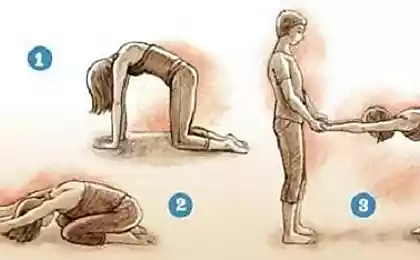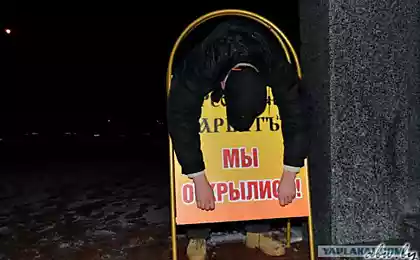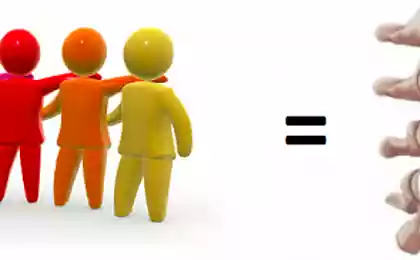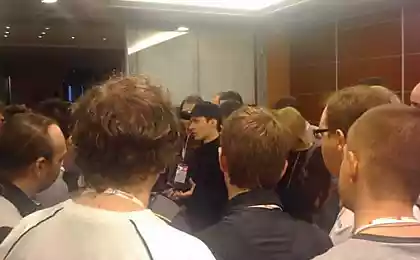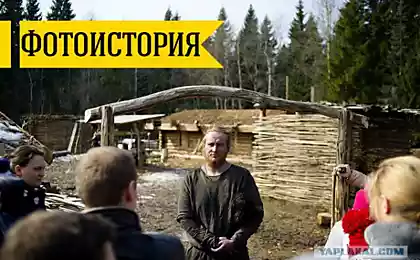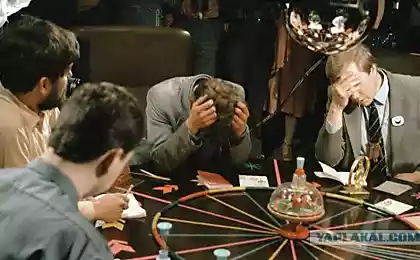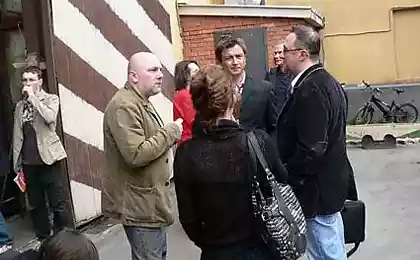594
Pinched nerve roots - Business... nothing personal?
If you are concerned about pain in the back — not in a hurry to go to CT, MRI, afraid of schmorl's nodule and diagnosis "osteochondrosis".Visit a good massage therapist or specialist who owns a soft manual techniques ( not to be confused with manual therapy), the Word "soft" in this phrase suggests that the specialist does not seek through force to "straighten" the vertebrae, and works with the body as a holistic structure, eliminating tension in the soft tissues, muscles, ligaments. And certainly not be in a hurry to remove surgical methods of hernia, vertebrae. Receive people one by one cut out a few hernias, but the pain remained. Why? read below the opinion of the chief researcher of the Russian scientific center of roentgenology and radiology, Professor Pavel Zharkov.
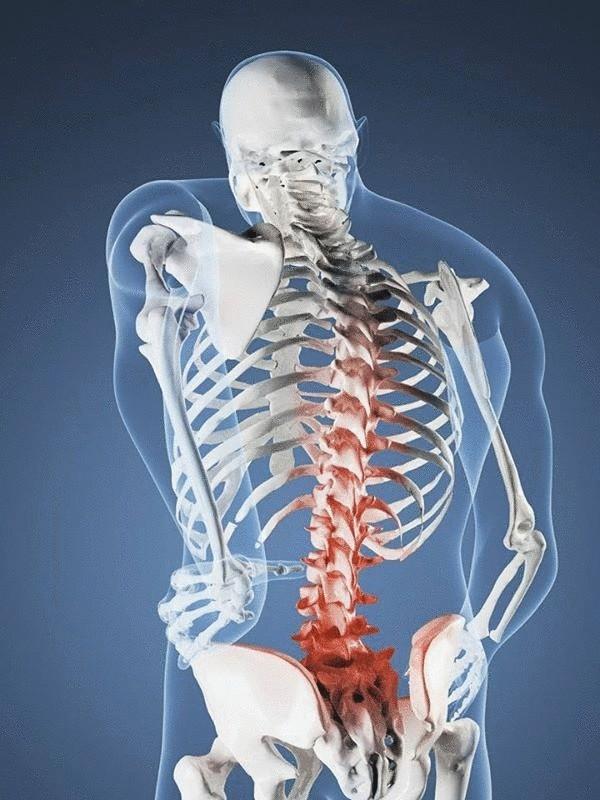
"Currently, the understanding of the causes of pain in the body, especially the back and limbs, if they are localized outside the joints, is based on the established world view of pathology of the intervertebral discs (discogenic pain), they blame the osteochondrosis of the spine, which allegedly damages the spinal nerve roots. Herniated discs refer to osteochondrosis. Pain in the joints attributed to osteoarthritis.
In fact, in humans there is no place where it could be damaged the spinal nerve roots. And in General outside the spinal canal ("dural SAC") spinal nerves no. The roots of the spinal nerves can be pressed together with the "Guralnik bag" just in all its weight and only in the lumbar spine in severe fractures of the spine, tumors, and inflammatory abscesses in the spinal canal. The corruption of the entire mass of roots is called the "cauda equina syndrome", which is accompanied by loss of motor and sensory functions of the lower extremities and pelvic organs, and not pain. Loss of these functions, and not the pain is characterized by any damage to any nerve agents.
Thus, if a single spinal nerve roots are damaged can not be, and no "radiculitis" and "radicular" syndromes do not exist as there is no peripheral vertebrogenic pain syndromes. The elucidation of these circumstances radically changes not only diagnosis but also treatment, and prognosis of the disease. Simplified diagnosis, treatment reduced from months to days, the prognosis is pessimistic or uncertain it becomes, in most cases absolutely favorable.
Therefore, the search in the spine causes pain syndromes – a waste of time and money, especially on expensive and time-consuming radiological methods.
From speculative reflection to knowingunfortunately, not only clinicians don't read the morphological and physiological literature, but also anatomists, pathologists, physiologists, pathophysiologists do not read the clinical literature, and that they found a lot of interesting. And even though they were convinced that not teaching students that their academic work has a zero output. So, reading the literature on back pain, anatomists discovered that the authors are only familiar with the student aware of the normal anatomy of the spine and spinal cord, many of them do not differentiate between vertebral and spinal canals, which, reflecting on the roots of the spinal nerves, don't know what it is and where the roots are, and even call them spinal roots. Meanwhile, the roots are to the nerves, not the spinal cord.
Pathologists would also find that the authors of numerous monographs about degenerative disc disease also don't know what it is, but because of the pain in the back and even the limbs is attributed to osteochondrosis, and many simply call this pain osteochondrosis. They would know also that the authors of the many reputable guides don't know what bone, cartilage, nerve guides, spinal cord and brain have no pain receptors, but because of their damage and even more slow, chronic, do not give pain symptoms. That's why talking about the etiology and pathogenesis of pain syndromes reduced to speculative reflection, and draw the same speculative schemes, where naked from cartilage the bones RUB against each other, where a drawing of a hernia infringe ephemeral roots and thereby allegedly caused excruciating pain.
The role of the spine is definitely great in providing functions of support and movement, protect the spinal cord and spinal nerves. But to take on him all our troubles there is no reason. For proof of this, first of all, a few words on the normal clinical anatomy of the spine and of the prisoners therein neurological structures.
"Educational program" for specialists from theVertebral column forms the vertebral canal, bounded in front by the vertebral bodies and the intervertebral disks, covered by posterior longitudinal ligament. On the sides and back of the spinal canal is limited to the arches of the vertebrae and the yellow ligaments between them. Inside the spinal cord within the spinal canal ("dural sack"), which is the spinal cord (from the base of skull to 2nd lumbar vertebra), and 2nd vertebrae – the spinal nerve roots ("ponytail"). The space between the walls of the vertebral canal and the spinal channels filled with loose connective tissue, allowing "urlname bag" to move easily in all directions. So on the body when flexion-extension movements of the head "dural bag" is moved in the longitudinal direction by 3-5 cm
The spinal canal is filled with cerebrospinal fluid in which floats the spinal cord, below the first lumbar vertebra – the spinal nerve roots. When any pressure is applied to the "dural bag" roots shifted in the cerebrospinal fluid, easily moving away from compression.
The spinal nerve roots (front and rear, i.e. motor and sensory) are separated only in the spinal canal, beyond which they go out in pairs in the same sheath and are called the spinal nerve. This nerve is sent to the intervertebral hole and exits through its upper part, directly under the arc of the vertebra of the same name, that is significantly higher intervertebral disc. In other words, the spinal nerve and disk are arranged in different transverse planes. Therefore, not only bulging disc and hernia must not damage spinal nerve. Interestingly, American anatomists have long known this and have created a special training dummy, showing the impossibility of this compression. And, despite this, the United States held the greatest number of surgeries to remove herniated discs.
A few words about the pathological anatomy of osteochondrosisosteochondrosis is a pathological term that is entered Smilem in 1932 and means degenerative changes in the cartilage and surrounding bone, that is, can be anywhere where there is cartilage and bone in the spine, the joints, the symphysis, ribs and etc. and begins the degenerative process of cartilage. The cartilaginous phase called Morlam a chondrosis. Essentially the degenerative disc disease is the aging process – "timely" or premature. It is not a disease but a slowly developing pathological condition, such as graying, baldness, senile changes of the skin, etc.
Having fun speculative exercise, many authors argue that osteohondroznye boundary bony growths of the vertebrae may injure the spinal cord or the spinal nerve roots. For this reason it should be said that such growths in the rear direction is not seen. Osteohondroznye growth going forward and sideways, along the blubber drives. In addition, as already mentioned, spinal nerves (and not the roots!) and bony growths at the level of intervertebral discs are located in different transverse planes.
Thus, no herniated discs or bony growths osteohondroznye can not damage the spinal nerves in the spinal canal or in the intervertebral holes (at least in the thoracic and lumbar spine), especially the spinal nerve roots for the simple reason that roots outside the "dural SAC" no. The cause of the pain probably would have been installed if the examination of the patient investigated what hurts instead of looking for the cause in the spine or even the head. Now we are confronted with such facts, when, not finding any pathology in the spine, I believe that there is no morphological basis for pain, and thus pain is psychogenic. The joint treatment of these chronic patients with psychiatrists is presented as the latest achievement of the neurological Sciences. And this is not a difficulty and the shame of medicine. Many clinicians reject the concept of discogenic pain syndromes.
J. F. Brailsford (1955), G. S. Hackett (1956), R. Wartenberg (1958), G. Keller (1962) recorded the attention on the pathology of the muscle, fibrous tissues (tendons: ligaments, fascia) of the limbs and trunk and receptors in them. This position, especially G. Keller, was subjected to merciless criticism Poplavskogo J. (1974), which he called "eloquent attacks on the theory of discogenic sciatica". Indeed, the weakness of these authors was that they relied only on their extensive clinical experience, though, and critically intelligent, but not confirmed by anatomical studies. Therefore, despite some critical work, the concept of discogenic pain syndromes in trunk and extremities gradually won more and more supporters, and to the 80-th years of the twentieth century came to dominate almost completely. If the foreign literature featured discogenic lesions of the roots, and in the domestic literature, and practice, thanks to the authoritative work of J. Poplavskogo and his school, established look at low back pain as a result degenerative disc disease of the spine, which include herniated discs.
The deadlockDeadlock, which came in neurology and orthopedics in the diagnosis and treatment of pain syndromes, due to the fact that they instead of straight and clear road of bona fide clinical research patient went the way of far-fetched speculative concepts and "theories" about wine in General and of the spine degenerative disc disease and herniated discs in particular. After that, all incidental findings in the spine ranging from degenerative disc disease to the options rules, began to ascribe guilt in pain syndromes. And so when the opportunity arose with imaging CT and MRI can reveal bulging and herniated discs, then they piled all the troubles.
Almost none of the patient with back pain not to find information about the exact localization of the pain points or at least areas, not to mention the palpation study in the specified patient areas. And it is possible to understand why overloaded by patients doctor to carry out these studies, if everyone knows that pain from degenerative disc disease or disc herniation. But because the patient immediately and sent for x-ray, CT, MRI. Before many offices of neurologists and orthopedists are posted ads that patients with back pain without x-rays of the spine are not accepted. And from the radiologist patients come with the conclusion revealed they have "widespread pain". About the qualifications of the radiologists, CT and MRI specialists special.
1490 of the examined patients referred from different specialists to the x-ray, CT, MRI, 82% did not were stripped and inspected.
We were able to show and prove that the cause of pain in the musculoskeletal system is not in the spine, and in a trivial mechanical damage to the ligaments, tendons, muscles, often already changed degenerative process. But all these anatomical structures are not located in the spine, and in those places that hurt. These places should be identified clinically and must be made radiographs of the whole area around the pain zone, not to miss inflammatory or neoplastic pathology. The main result of our work was the conclusion that the source of pain may be only those anatomical structures, which have pain receptors. Pain receptors no vertebrae or intervertebral discs, neither in the bones nor in articular cartilage, neither in the spinal cord or the spinal nerve roots or the nerves themselves, as in nails and hair. They are in small numbers only in the membranes of the brain and nerves (perineurium). But they full of ligaments, tendons, the muscles, periosteum, blood vessels. What anatomical structures that have nociceptors and are a source of pain in all body systems.
To Wake up from hypnosis
Our research has shown a complete failure of concepts based on the incorrect speculative anatomical views. Ignorance of the precise anatomical details and topography of the nervous system of the spine has led to the invented "compression" of the spinal nerve roots and, consequently, the diagnoses of "radiculitis" and "radicular syndromes" and therefore to search for the degenerative disc disease and herniated discs. Since, in the view of supporters of this concept, the hernia is the cause of the pain, they need to remove, and often not only a hernia but also a whole disk, and even with its adjacent vertebral bodies.
This litigationthe database has grown a whole industry of diagnosis and treatment of pain syndromes in the musculoskeletal system. Here and the latest diagnostic tests, high-tech operations, and production of complex implants, and most importantly, hundreds of pharmaceuticals. It all together – an enormous business "and nothing personal." In this business the interests of patients are not taken into account.
I believe that the Russian neurology sincerely doesn't know what he was doing, while under hypnosis "advanced Western medicine". The shaft of the abuses of the appointment surgery and expensive pharmaceuticals is quite large and is steadily growing, especially in the sphere of paid medicine. As for Western medicine, it seems, the business won the Hippocratic Oath. Russia actively associated with the ideology of maximum profit by any available means. The introduction of such an ideology, the easier it is, the less competent and less moral environment of implementation. The task of public health to create a situation in which the desire for immoral gain is not only ours, but the Western medical business in our territory would be nipped in the Bud.published
Author: Pavel Zharkov chief researcher of the Russian research center of roentgenology and radiology, Professor.
P. S. And remember, just changing your mind — together we change the world! ©
Source: www.facebook.com/photo.php?fbid=10205382727861408&set=gm.969924023040794&type=1&theater

"Currently, the understanding of the causes of pain in the body, especially the back and limbs, if they are localized outside the joints, is based on the established world view of pathology of the intervertebral discs (discogenic pain), they blame the osteochondrosis of the spine, which allegedly damages the spinal nerve roots. Herniated discs refer to osteochondrosis. Pain in the joints attributed to osteoarthritis.
In fact, in humans there is no place where it could be damaged the spinal nerve roots. And in General outside the spinal canal ("dural SAC") spinal nerves no. The roots of the spinal nerves can be pressed together with the "Guralnik bag" just in all its weight and only in the lumbar spine in severe fractures of the spine, tumors, and inflammatory abscesses in the spinal canal. The corruption of the entire mass of roots is called the "cauda equina syndrome", which is accompanied by loss of motor and sensory functions of the lower extremities and pelvic organs, and not pain. Loss of these functions, and not the pain is characterized by any damage to any nerve agents.
Thus, if a single spinal nerve roots are damaged can not be, and no "radiculitis" and "radicular" syndromes do not exist as there is no peripheral vertebrogenic pain syndromes. The elucidation of these circumstances radically changes not only diagnosis but also treatment, and prognosis of the disease. Simplified diagnosis, treatment reduced from months to days, the prognosis is pessimistic or uncertain it becomes, in most cases absolutely favorable.
Therefore, the search in the spine causes pain syndromes – a waste of time and money, especially on expensive and time-consuming radiological methods.
From speculative reflection to knowingunfortunately, not only clinicians don't read the morphological and physiological literature, but also anatomists, pathologists, physiologists, pathophysiologists do not read the clinical literature, and that they found a lot of interesting. And even though they were convinced that not teaching students that their academic work has a zero output. So, reading the literature on back pain, anatomists discovered that the authors are only familiar with the student aware of the normal anatomy of the spine and spinal cord, many of them do not differentiate between vertebral and spinal canals, which, reflecting on the roots of the spinal nerves, don't know what it is and where the roots are, and even call them spinal roots. Meanwhile, the roots are to the nerves, not the spinal cord.
Pathologists would also find that the authors of numerous monographs about degenerative disc disease also don't know what it is, but because of the pain in the back and even the limbs is attributed to osteochondrosis, and many simply call this pain osteochondrosis. They would know also that the authors of the many reputable guides don't know what bone, cartilage, nerve guides, spinal cord and brain have no pain receptors, but because of their damage and even more slow, chronic, do not give pain symptoms. That's why talking about the etiology and pathogenesis of pain syndromes reduced to speculative reflection, and draw the same speculative schemes, where naked from cartilage the bones RUB against each other, where a drawing of a hernia infringe ephemeral roots and thereby allegedly caused excruciating pain.
The role of the spine is definitely great in providing functions of support and movement, protect the spinal cord and spinal nerves. But to take on him all our troubles there is no reason. For proof of this, first of all, a few words on the normal clinical anatomy of the spine and of the prisoners therein neurological structures.
"Educational program" for specialists from theVertebral column forms the vertebral canal, bounded in front by the vertebral bodies and the intervertebral disks, covered by posterior longitudinal ligament. On the sides and back of the spinal canal is limited to the arches of the vertebrae and the yellow ligaments between them. Inside the spinal cord within the spinal canal ("dural sack"), which is the spinal cord (from the base of skull to 2nd lumbar vertebra), and 2nd vertebrae – the spinal nerve roots ("ponytail"). The space between the walls of the vertebral canal and the spinal channels filled with loose connective tissue, allowing "urlname bag" to move easily in all directions. So on the body when flexion-extension movements of the head "dural bag" is moved in the longitudinal direction by 3-5 cm
The spinal canal is filled with cerebrospinal fluid in which floats the spinal cord, below the first lumbar vertebra – the spinal nerve roots. When any pressure is applied to the "dural bag" roots shifted in the cerebrospinal fluid, easily moving away from compression.
The spinal nerve roots (front and rear, i.e. motor and sensory) are separated only in the spinal canal, beyond which they go out in pairs in the same sheath and are called the spinal nerve. This nerve is sent to the intervertebral hole and exits through its upper part, directly under the arc of the vertebra of the same name, that is significantly higher intervertebral disc. In other words, the spinal nerve and disk are arranged in different transverse planes. Therefore, not only bulging disc and hernia must not damage spinal nerve. Interestingly, American anatomists have long known this and have created a special training dummy, showing the impossibility of this compression. And, despite this, the United States held the greatest number of surgeries to remove herniated discs.
A few words about the pathological anatomy of osteochondrosisosteochondrosis is a pathological term that is entered Smilem in 1932 and means degenerative changes in the cartilage and surrounding bone, that is, can be anywhere where there is cartilage and bone in the spine, the joints, the symphysis, ribs and etc. and begins the degenerative process of cartilage. The cartilaginous phase called Morlam a chondrosis. Essentially the degenerative disc disease is the aging process – "timely" or premature. It is not a disease but a slowly developing pathological condition, such as graying, baldness, senile changes of the skin, etc.
Having fun speculative exercise, many authors argue that osteohondroznye boundary bony growths of the vertebrae may injure the spinal cord or the spinal nerve roots. For this reason it should be said that such growths in the rear direction is not seen. Osteohondroznye growth going forward and sideways, along the blubber drives. In addition, as already mentioned, spinal nerves (and not the roots!) and bony growths at the level of intervertebral discs are located in different transverse planes.
Thus, no herniated discs or bony growths osteohondroznye can not damage the spinal nerves in the spinal canal or in the intervertebral holes (at least in the thoracic and lumbar spine), especially the spinal nerve roots for the simple reason that roots outside the "dural SAC" no. The cause of the pain probably would have been installed if the examination of the patient investigated what hurts instead of looking for the cause in the spine or even the head. Now we are confronted with such facts, when, not finding any pathology in the spine, I believe that there is no morphological basis for pain, and thus pain is psychogenic. The joint treatment of these chronic patients with psychiatrists is presented as the latest achievement of the neurological Sciences. And this is not a difficulty and the shame of medicine. Many clinicians reject the concept of discogenic pain syndromes.
J. F. Brailsford (1955), G. S. Hackett (1956), R. Wartenberg (1958), G. Keller (1962) recorded the attention on the pathology of the muscle, fibrous tissues (tendons: ligaments, fascia) of the limbs and trunk and receptors in them. This position, especially G. Keller, was subjected to merciless criticism Poplavskogo J. (1974), which he called "eloquent attacks on the theory of discogenic sciatica". Indeed, the weakness of these authors was that they relied only on their extensive clinical experience, though, and critically intelligent, but not confirmed by anatomical studies. Therefore, despite some critical work, the concept of discogenic pain syndromes in trunk and extremities gradually won more and more supporters, and to the 80-th years of the twentieth century came to dominate almost completely. If the foreign literature featured discogenic lesions of the roots, and in the domestic literature, and practice, thanks to the authoritative work of J. Poplavskogo and his school, established look at low back pain as a result degenerative disc disease of the spine, which include herniated discs.
The deadlockDeadlock, which came in neurology and orthopedics in the diagnosis and treatment of pain syndromes, due to the fact that they instead of straight and clear road of bona fide clinical research patient went the way of far-fetched speculative concepts and "theories" about wine in General and of the spine degenerative disc disease and herniated discs in particular. After that, all incidental findings in the spine ranging from degenerative disc disease to the options rules, began to ascribe guilt in pain syndromes. And so when the opportunity arose with imaging CT and MRI can reveal bulging and herniated discs, then they piled all the troubles.
Almost none of the patient with back pain not to find information about the exact localization of the pain points or at least areas, not to mention the palpation study in the specified patient areas. And it is possible to understand why overloaded by patients doctor to carry out these studies, if everyone knows that pain from degenerative disc disease or disc herniation. But because the patient immediately and sent for x-ray, CT, MRI. Before many offices of neurologists and orthopedists are posted ads that patients with back pain without x-rays of the spine are not accepted. And from the radiologist patients come with the conclusion revealed they have "widespread pain". About the qualifications of the radiologists, CT and MRI specialists special.
1490 of the examined patients referred from different specialists to the x-ray, CT, MRI, 82% did not were stripped and inspected.
We were able to show and prove that the cause of pain in the musculoskeletal system is not in the spine, and in a trivial mechanical damage to the ligaments, tendons, muscles, often already changed degenerative process. But all these anatomical structures are not located in the spine, and in those places that hurt. These places should be identified clinically and must be made radiographs of the whole area around the pain zone, not to miss inflammatory or neoplastic pathology. The main result of our work was the conclusion that the source of pain may be only those anatomical structures, which have pain receptors. Pain receptors no vertebrae or intervertebral discs, neither in the bones nor in articular cartilage, neither in the spinal cord or the spinal nerve roots or the nerves themselves, as in nails and hair. They are in small numbers only in the membranes of the brain and nerves (perineurium). But they full of ligaments, tendons, the muscles, periosteum, blood vessels. What anatomical structures that have nociceptors and are a source of pain in all body systems.
To Wake up from hypnosis
Our research has shown a complete failure of concepts based on the incorrect speculative anatomical views. Ignorance of the precise anatomical details and topography of the nervous system of the spine has led to the invented "compression" of the spinal nerve roots and, consequently, the diagnoses of "radiculitis" and "radicular syndromes" and therefore to search for the degenerative disc disease and herniated discs. Since, in the view of supporters of this concept, the hernia is the cause of the pain, they need to remove, and often not only a hernia but also a whole disk, and even with its adjacent vertebral bodies.
This litigationthe database has grown a whole industry of diagnosis and treatment of pain syndromes in the musculoskeletal system. Here and the latest diagnostic tests, high-tech operations, and production of complex implants, and most importantly, hundreds of pharmaceuticals. It all together – an enormous business "and nothing personal." In this business the interests of patients are not taken into account.
I believe that the Russian neurology sincerely doesn't know what he was doing, while under hypnosis "advanced Western medicine". The shaft of the abuses of the appointment surgery and expensive pharmaceuticals is quite large and is steadily growing, especially in the sphere of paid medicine. As for Western medicine, it seems, the business won the Hippocratic Oath. Russia actively associated with the ideology of maximum profit by any available means. The introduction of such an ideology, the easier it is, the less competent and less moral environment of implementation. The task of public health to create a situation in which the desire for immoral gain is not only ours, but the Western medical business in our territory would be nipped in the Bud.published
Author: Pavel Zharkov chief researcher of the Russian research center of roentgenology and radiology, Professor.
P. S. And remember, just changing your mind — together we change the world! ©
Source: www.facebook.com/photo.php?fbid=10205382727861408&set=gm.969924023040794&type=1&theater
